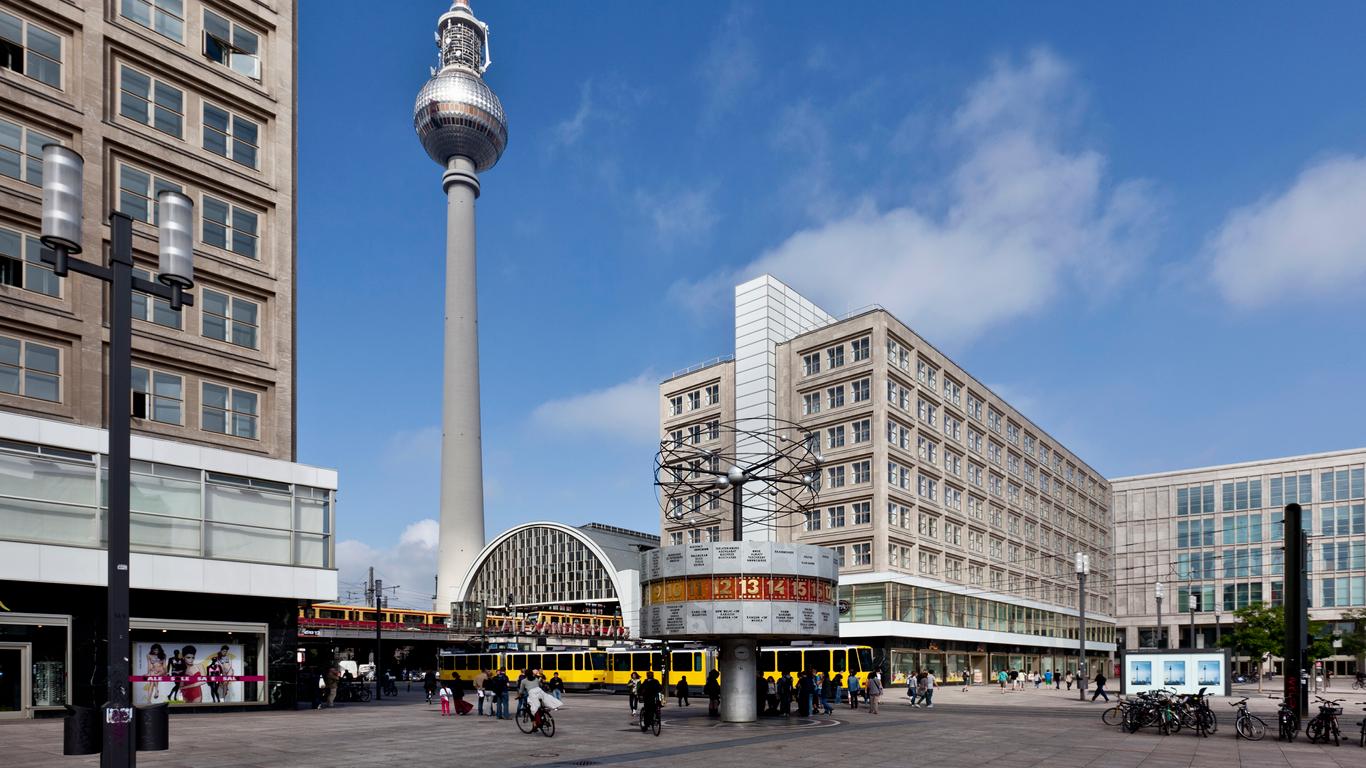The largest urban square in Germany and most famous of Berlin, Alexanderplatz is a key landmark of the capital that is full of energy, activity, and numerous attractions. It is a pedestrian-only zone, and a wide, open space in the centre of Berlin, named after the Russian Czar Alexander I. In addition to a central city hub, it is a major transport zone hosting a big train station and a key shopping district dominated by the Central Market Hall.
Possibly the most iconic feature of Alexanderplatz is the World Clock, a round tower showing the different time zones of countries around the world, with colourfully decorated faces and an eye-catching monument on top. Shopping is another main attraction, with the Centrum department store offering a range of fashion boutiques in a magnificent modern building. Since November 2000, visitors have been able to enjoy the CUBIX multiplex cinema, which is now involved in the annual city film festival, Berlinale. The Berlin TV Tower also towers over the square and acts as a landmark, defining the location of Alexanderplatz for people throughout the city.
Alexanderplatz has a train and underground train station on the square, with a title of the same name, making it the easiest way to travel, although there are also numerous bus routes. From Berlin’s Schoenefeld Airport, the journey to Alexanderplatz is only around 50 minutes or 30 minutes by car.
The vast, expansive space of Alexanderplatz originally started as a humble cattle market and only became a prominent feature of the city in the 1800s when the central train station was constructed. During the 1920s, the square hosted a buzzing nightlife, inspiring films based on its reputation for swinging parties and social activity. Alexanderplatz continued to be significant during the existence of East Germany when the local Press Café hosted a mural on its walls revealing Marxist sentiments towards the press and played host to one of the nation’s biggest peaceful demonstrations in 1989.





